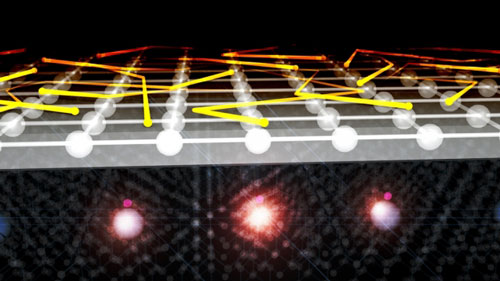Quantum Sensing: Harnessing Quantum Effects for Unprecedented Precision
What is Quantum Sensing?
Quantum sensing is an emerging field that exploits the unique properties of quantum systems to develop highly sensitive and precise sensors. By harnessing quantum effects such as superposition, entanglement, and quantum interference, quantum sensors can achieve unprecedented levels of sensitivity, resolution, and accuracy compared to classical sensors.

Key Concepts in Quantum Sensing
Quantum sensing relies on several fundamental concepts from quantum physics:
- Quantum Superposition: Quantum systems can exist in a superposition of multiple states simultaneously. This property allows quantum sensors to probe multiple sensing parameters at once, enabling multi-parameter sensing with a single device.
- Quantum Entanglement: Entanglement is a quantum phenomenon where two or more particles become correlated in such a way that their properties are linked, even if they are separated by large distances. Entangled quantum sensors can exhibit enhanced sensitivity and noise resistance compared to individual sensors.
- Quantum Interference: Quantum interference occurs when multiple quantum states interact with each other, leading to constructive or destructive interference. By carefully controlling quantum interference, researchers can develop highly sensitive quantum sensors that can detect tiny changes in physical quantities.
- Quantum Metrology: Quantum sensing is closely related to the field of quantum metrology, which focuses on using quantum systems to perform ultra-precise measurements of physical quantities. Quantum metrology exploits entanglement and other quantum effects to achieve a quantum enhancement in sensitivity, surpassing the standard quantum limit.
Types of Quantum Sensors
Quantum sensing encompasses a wide range of sensor technologies, each exploiting different quantum systems and effects. Some prominent examples include:
Nitrogen-Vacancy (NV) Centers in Diamond
NV centers are atomic-scale defects in diamond that can be used as highly sensitive probes for magnetic fields, electric fields, temperature, and pressure. By optically manipulating and reading out the quantum states of NV centers, researchers can develop ultra-precise quantum sensors for applications such as biomedical imaging, materials characterization, and fundamental physics research.
Superconducting Quantum Interference Devices (SQUIDs)
SQUIDs are highly sensitive magnetometers that exploit the quantum interference of superconducting loops. They can detect extremely weak magnetic fields, making them valuable tools for applications such as brain imaging, geophysical surveys, and quantum computing.
Atomic Interferometers
Atomic interferometers use the wave-particle duality of atoms to create highly sensitive inertial sensors. By splitting and recombining atomic wave packets, these sensors can measure acceleration, rotation, and gravity with unprecedented precision. Atomic interferometers have applications in navigation, geophysics, and tests of fundamental physics.
Optomechanical Sensors
Optomechanical sensors exploit the quantum interactions between light and mechanical motion. By coupling optical and mechanical degrees of freedom at the nanoscale, these sensors can achieve extremely high sensitivity to force, displacement, and mass. Optomechanical sensors have potential applications in quantum-limited measurements, quantum information processing, and tests of quantum gravity.
Applications of Quantum Sensing
Quantum sensing has a wide range of applications across various fields:
Fundamental Physics
Quantum sensors offer new opportunities to test fundamental theories of physics, such as general relativity and quantum mechanics, with unprecedented precision. They can be used to search for dark matter, study gravitational waves, and probe the nature of space-time.
Biomedical Imaging
Quantum sensors, particularly NV centers in diamond, have the potential to revolutionize biomedical imaging. They can provide nanoscale resolution, high sensitivity, and biocompatibility, enabling the study of biological processes at the molecular level. Quantum sensors could be used for early disease detection, drug discovery, and personalized medicine.
Navigation and Geodesy
Quantum sensors, such as atomic interferometers and SQUIDs, can greatly enhance the precision and reliability of navigation and geodesy systems. They can provide highly accurate measurements of acceleration, rotation, and gravity, enabling advanced inertial navigation, gravity mapping, and exploration of natural resources.
Quantum Computing and Communication
Quantum sensors are essential components of quantum computing and quantum communication systems. They can be used to read out and manipulate quantum bits (qubits), as well as to distribute quantum entanglement over long distances. Quantum sensors can help overcome the challenges of scalability, error correction, and security in quantum technologies.
Challenges and Future Perspectives
Despite the remarkable progress in quantum sensing, several challenges need to be addressed for its widespread adoption. One of the main challenges is the scalability and integration of quantum sensors into practical devices. Many quantum sensors require cryogenic temperatures, ultra-high vacuum, or complex laser systems, which limit their portability and cost-effectiveness.
Future research in quantum sensing will focus on developing more robust, compact, and affordable quantum sensor technologies. This will involve the exploration of new quantum systems, such as 2D materials, topological insulators, and metamaterials, as well as the integration of quantum sensors with classical electronics and photonics. Additionally, the development of quantum-enhanced algorithms and protocols will be crucial for unlocking the full potential of quantum sensing in real-world applications.
Further Reading
npj Quantum Information, All-optical nuclear quantum sensing using nitrogen-vacancy centers in diamond
Nature Reviews Physics, Quantum sensors for biomedical applications
Advanced Quantum Technologies, Quantum Sensing for Energy Applications: Review and Perspective
